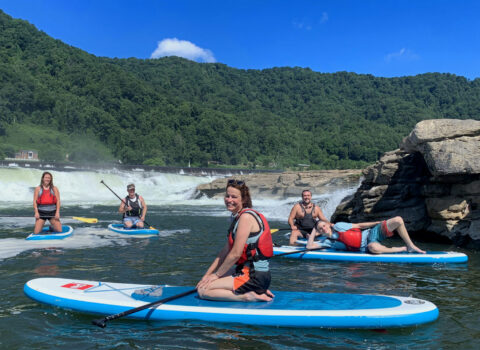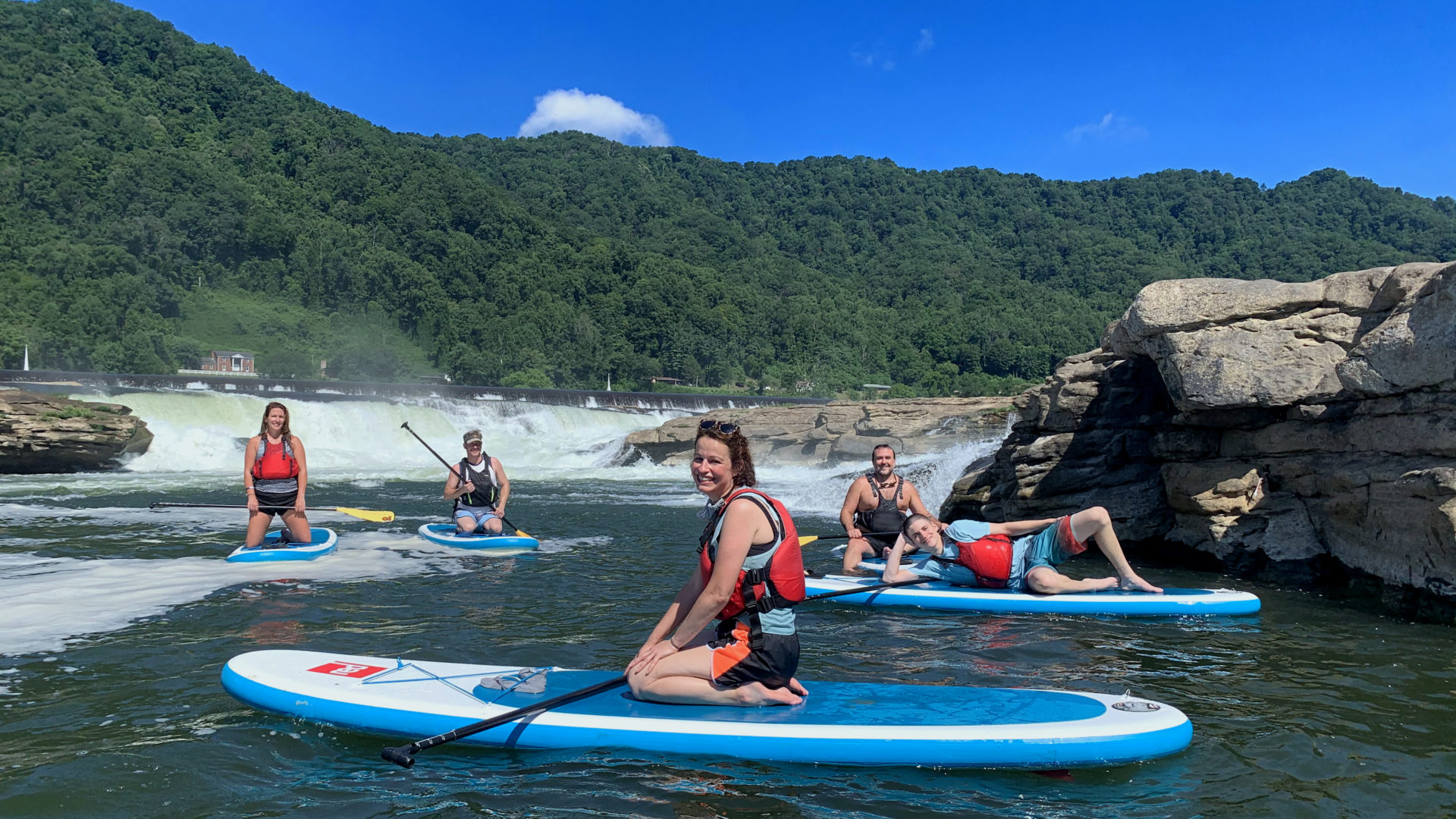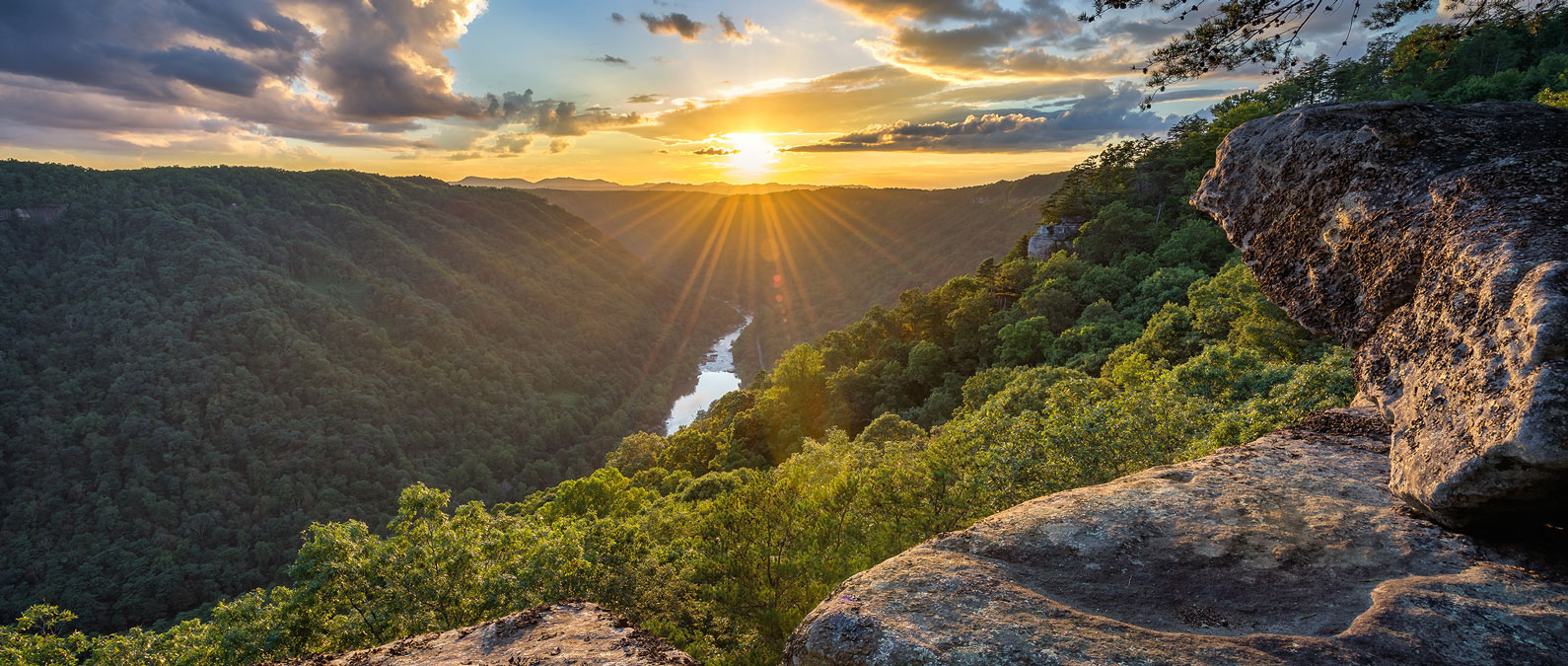Stand-Up Paddleboarding (SUP) is easy to learn and one of the trendiest watersports around! River Expeditions is now offering unique SUP adventures for your consideration:
2-HOUR NEW RIVER GORGE BRIDGE TOUR – STARTING AT $60/PERSON*
Enjoy the stunning beauty of the New River and the famous New River Gorge Bridge from a stand-up paddleboard! This unique trip allows you to paddle on a calm section of the river – great for first time or advanced paddlers. The trip attains up a calm pool to the base of a small rapid. Choose your adventure – stick to the calm water or give the moving water a go!
- This trip is dependent upon water levels.
- *Minimum age 14
- $60 per person for 2-3 guests.
2-HOUR KANAWHA FALLS – STARTING AT $60/PERSON*
A true hidden gem, Kanawha Falls is full of surprises. The beautiful falls views from the parking area are just a small taste of the views we have in store!
Don’t let the moving water of the river deter you, this spot is calm and great for beginners. There is a large flat water pool to help get you comfortable on the board. We can take a break at a nice sandy beach and then go explore the falls. Depending on water levels there are different activities such as rock slides, jump rocks, and swimming under waterfalls!
- This trip is dependent upon water levels.
- *Minimum age 14
- $60 per person for 2-3 guests.
ALSO AVAILABLE UPON REQUEST:
Paddleboard Rentals
Kayak Tours / Rentals (including Tandem)
Hiking Tours
Shuttle Transportation














